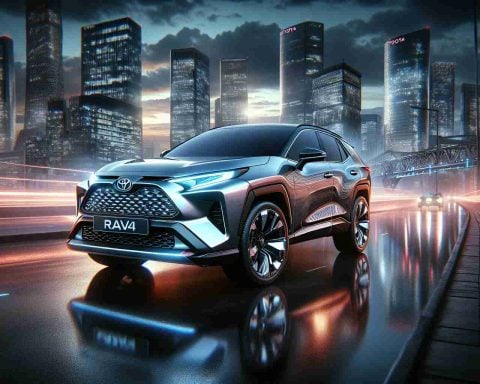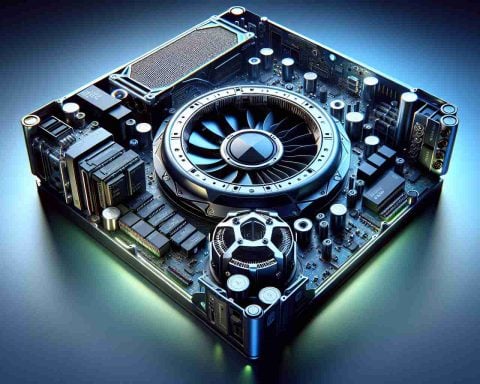In a bold stride towards sustainability, Subaru is gearing up to redefine the electric vehicle (EV) landscape. Renowned for its all-wheel-drive capabilities and robust performance, Subaru is now setting its sights on an electrified future, with a commitment to making EV technology accessible to a broader audience.
Introducing the E-Subaru Revolution, the automaker has announced ambitious plans to roll out a new range of electric vehicles designed with practicality and affordability in mind. Subaru’s long-standing partnership with Toyota has played a pivotal role in this transformation, allowing the company to leverage cutting-edge battery technology and advanced manufacturing techniques.
What sets Subaru apart? The focus remains on integrating its famous Symmetrical All-Wheel Drive system into the new electric models, promising unparalleled handling and traction even in electrified formats. This ensures that Subaru’s electric lineup will maintain the brand’s legacy of ruggedness and performance.
Why is this a game-changer? Unlike many luxury EVs dominating the market, Subaru aims to deliver affordable electric options that don’t compromise on quality or capability. This democratization of EV technology could significantly accelerate the adoption of electric vehicles, particularly in regions where Subaru already enjoys a loyal customer base.
Looking ahead, Subaru plans to unveil its first fully-electric SUV globally by 2026. This venture signifies Subaru’s dedication to evolving with the times while staying true to its core values. It marks not just an evolution, but potentially a revolution, in providing environmentally friendly vehicles for everyday adventures.
The Next Wave: How Subaru is Leading the Charge in Affordable EVs
Sustainability has become a crucial element in the automotive industry’s evolution, and Subaru is positioning itself at the forefront of this shift. With its strategic approach to integrating electric vehicle (EV) technology, Subaru is making waves in a market traditionally dominated by high-end brands. This article delves into the unique aspects of Subaru’s EV strategy and what it means for the future of the automotive industry.
Subaru’s Unique Partnership and Technological Innovations
Subaru’s alliance with Toyota has been instrumental in its electrification journey. Through this partnership, Subaru is accessing cutting-edge battery technologies that promise extended ranges and faster charging times. This collaboration enhances both companies’ competitive edge by combining Subaru’s expertise in all-wheel-drive systems with Toyota’s advancements in electric battery technology.
Innovations in Driving Experience: Symmetrical All-Wheel Drive
A cornerstone of Subaru’s identity is its Symmetrical All-Wheel Drive system, known for providing superior balance, stability, and traction. In the electrification process, adapting this feature to the EV models represents a significant innovation. It ensures that drivers experience the same robust handling and safety even when transitioning to electric vehicles, preserving the brand’s core driving dynamics.
Affordable EVs for the Masses: A Game-Changer
While many electric vehicles on the market target luxury consumers, Subaru is focusing on affordability without sacrificing quality and performance. By lowering the entry barriers to EV ownership, Subaru is encouraging a wider audience to consider electric vehicles as viable alternatives. This could lead to substantial shifts in consumer behavior, especially in areas where Subaru already has a strong presence.
Specifications and Future Models
Subaru plans to release its first fully-electric SUV by 2026. While specific details about the SUV’s features and specs are under wraps, expectations are high, with industry experts predicting competitive range capabilities and innovative safety features. The emphasis on affordability suggests a price range accessible to average consumers, making it a strong contender in the EV market.
Pros and Cons of Subaru’s Electric Transition
Pros:
– Affordability: Opening the EV market to a broader audience.
– Performance: Retaining Subaru’s legendary handling capabilities.
– Partnership Benefits: Enhanced technology via collaboration with Toyota.
Cons:
– Market Uncertainty: Entry into a highly competitive and fast-evolving market.
– Brand Perception: Risk of alienating traditional customers used to gasoline-powered performance.
The Growing Trend of Sustainable Vehicles
Subaru’s commitment reflects a larger trend towards sustainable automotive solutions. As more manufacturers move towards electrification, consumer expectations and market dynamics are rapidly evolving. The integration of advanced technologies with affordability can significantly influence market trends, paving the way for more sustainable choices.
Subaru’s electrification plans are not merely a response to market demands but a proactive step towards a more sustainable future. By maintaining its focus on core principles like reliability and performance, Subaru is poised to become a key player in the democratisation of electric vehicles. As we look to a future where sustainable transportation becomes the norm, Subaru’s path could very well serve as a blueprint for others in the industry.
For more insights about Subaru’s initiatives and vehicle lineup, visit the Subaru official website.













